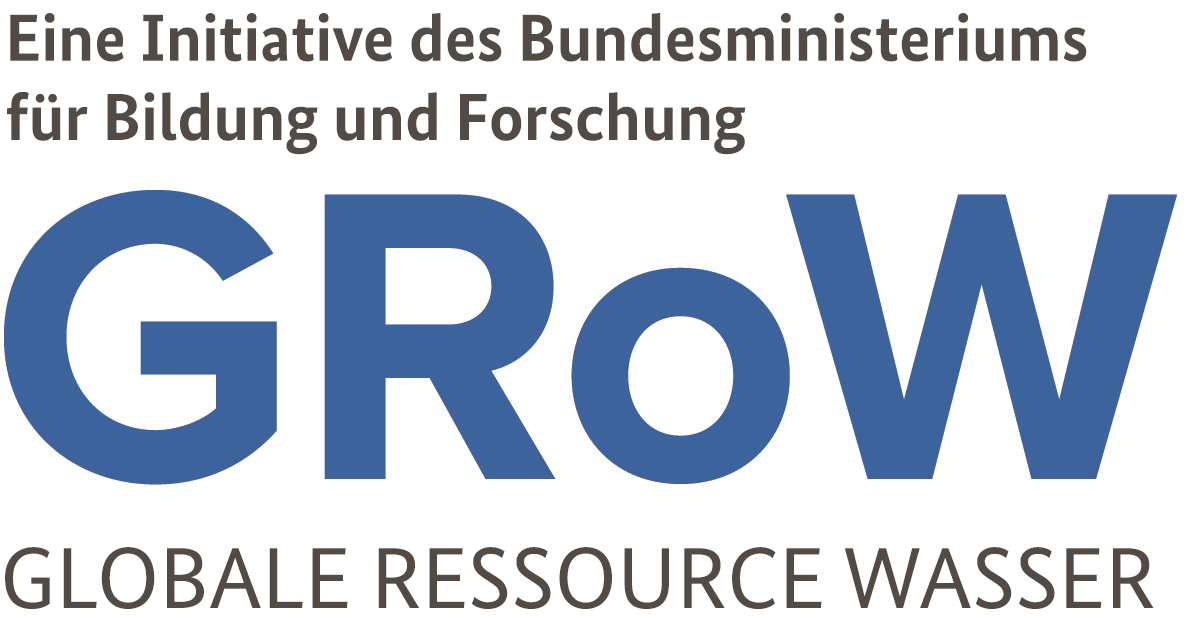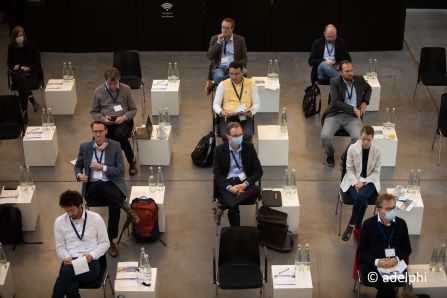
Call to Action: Water experts discuss GRoW results and make recommendations to overcome the global water crisis
On October 20 and 21, 2020, 12 joint research projects presented their results from 3 years of applied water research and brought the GRoW funding measure to a worthy finale. Up to 400 experts from research, policy and practice came together to discuss the innovative water management solutions and recommendations developed in GRoW to achieve SDG 6. A corona-induced hybrid conference concept created a bridge between the physical and the virtual world. This allowed not only 35 participants on site at the Umweltforum in Berlin but also 360 virtual participants to actively engage in the conference.
GRoW results and recommendations
After three years of applied research, coordinators of the 12 GRoW joint research projects presented and discussed solutions and recommendations for increasing the steering competence in the water sector. The diverse and interdisciplinary methodological approaches put a special focus on linking global and local action.
One focus of the GRoW results presented was on new ways of processing digital data to develop improved monitoring systems and forecasts. GRoW joint research projects used new, high-resolution satellite and meteorological data for the observation of, for example, agricultural water use efficiency (ViWa) and drought risks (SaWaM, GlobeDrought). The GlobeDrought project not only observed drought risks, but also examined vulnerability to drought effects and exposure. The resulting new insights into global interlinkages and local impacts will assist decision-makers in developing concrete measures for the implementation of SDG 6. The Sudanese Minister of Water H.E. Dr Yasir Mohamed, who joined the conference virtually, also stressed the importance of these new scientific findings. Using impressive pictures and figures, he emphasized how increasingly frequent floods and droughts threaten people, cities and nature in Sudan - and how crucial reliable seasonal forecasts are.
Another focus of the GRoW results are strategies for the integration of sustainable water management into global supply chains. Three strategic pillars proved to be particularly effective: the cooperation with suppliers, the consideration of the water footprint in product development, and the sustainable procurement. The WELLE project presented its new Organisational Waterfootprint Tool, which assists companies in increase efficiency in water use. Following a similar objective, the project InoCottonGROW developed and presented results and guidelines to improve the water footprint of the Pakistani cotton sector.
Other GRoW joint research projects developed and tested innovative water governance systems. The project iWaGSS together with the working group on the cross-cutting topic "incentive schemes", identified seven sins in local water management and developed resulting factors for success. Sustainable financing models represented a central area of focus. MedWater, a project researching sustainable management of large underground water storage systems, presented a globally applicable web-based "real-time data based decision support system". The DSS combines results from groundwater models, climate forecasts as well as scenario analyses and provides decision makers with recommendations for sustainable and long-term management concepts. The STEER project investigated an optimized implementation of integrated approaches in water management and developed a diagnostic water governance toolbox for this purpose. With the help of this toolbox, challenges in coordinating water management can be identified and improvement tools can be evaluated and developed. In addition to optimized water management, the influence and interactions with other sectors form a key success factor for sustainable water management. The WANDEL project examined the influence of water management on energy system transformation and presented a set of indicators for an improved, coordinated management of both resources.
GRoW also developed innovative measures for the enhancement and consistent application of transparent and scientifically based water management. This gains particular importance in the absence or failure of governmental water management institutions and enables affected stakeholders to organize themselves independently. The TRUST project developed a strategic decision tool for the development of sustainable and user-friendly concepts, which considers not only scientific data but also socio-economic conditions. Of equal importance is the cooperation between users, software developers and scientists. In order to promote this, the go-CAM project developed the CAM dialogue platform, which as a mediation tool compares different user requirements. The MuDak-WRM project highlighted another aspect of strengthening water management: A reduced and appropriate model complexity to promote the applicability and user-friendliness. This is particularly useful for regions with limited data availability.
Stakeholder Fora
In four stakeholder fora, the GRoW community discussed the transfer of GRoW solutions into practice. Stakeholders presented selected examples from 40 case studies worldwide covering four main topics: "Digital innovations for water quantity management", "Water quality management", "Decision support systems to prevent water conflicts" and "Application of tools to determine the water footprint". On the one hand, system developers presented the progress made in creating user-friendly tools, including, for example, the web-based software application supporting a Water Safety Plan (WSP) concept of VisDat. On the other hand, stakeholders presented the use and adoption of systems developed in GRoW, such as the application of the Water Footprint tool by evonik. Other international case studies presented the creation of a water footprint for energy generation through sugar cane in Brazil and the water quality early warning system for the protection of the Kruger National Park in South Africa by SANParks.
Outlook and Conclusion of the GRoW Funding Measure
GRoW introduces a variety of methods and tools to support the achievement of SDG 6. It is now up to the practitioners and decision makers to apply these in follow-up activities. The transfer and networking project GRoWnet was extended by half a year until summer 2021 to facilitate this process. During this time, the GRoW recommendations will be synthesized and transferred to specific target groups. The success of the GRoW final conference as well as the comprehensive GRoW initiative became apparent in the fruitful discussions and the productive development of recommendations for action for relevant target groups from policy, economy and management. The highlight of the final conference involved a panel discussion with high-ranking representatives such as Dr Olcay Ünver (Arizona State University and former Vice Chair of UN Water), Prof. Stefan Uhlenbrook (Strategic Program Director at IWMI), Barbara Gerhager (GIZ), Harald Schölzel (water and wastewater expert at the EIB) and Peter Saling (Director of Sustainability Methods at BASF). Even though the GRoW funding measure came to an end with the final conference, it is now more important than ever that the GRoW recommendations are implemented beyond the funding measure and that activities are continued. Only then, can the global water crisis be counteracted and sustainable water management be promoted worldwide.
Read more about the GRoW recommendations here.
Recordings of the plenary sessions and stakeholder presentations can be found here.
Further information about the hybrid conference concept and the virtual marketplace is available here.

